- Date
- Monday, April 12, 2021
So can the avalanche danger
Spring is certainly in the air, and with it comes change to the snowpack. With warm air and generally clear skies, the snowpack weakens as it reaches its melting point (0°C). Resulting avalanche activity largely depends on the layering, or lack thereof, in the snowpack. If the snowpack is deep and strong, generally loose wet avalanches are the main concern. If the snowpack has weak layers within it, destructive, full-path avalanches can result.
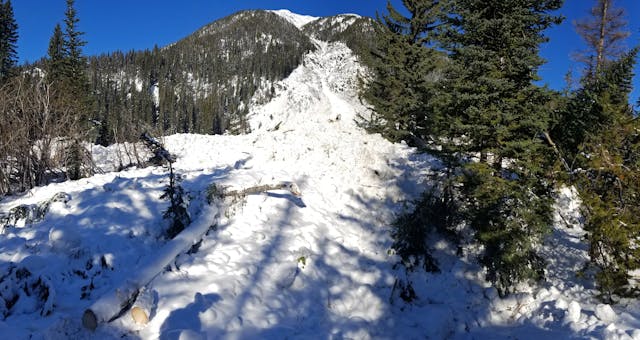
A full-path avalanche that travelled well into the valley.
Predicting avalanche activity when it comes to warming can be both straight-forward and tricky.
The relatively easy activity to predict is loose wet avalanches. As mild air temperature and solar input warms and melts the snow surface, natural avalanches will occur, often initiating near rocks or trees. The consequence of such avalanches is typically low, with the primary concern being if you are caught above a terrain trap (cliffs, gully, etc.).
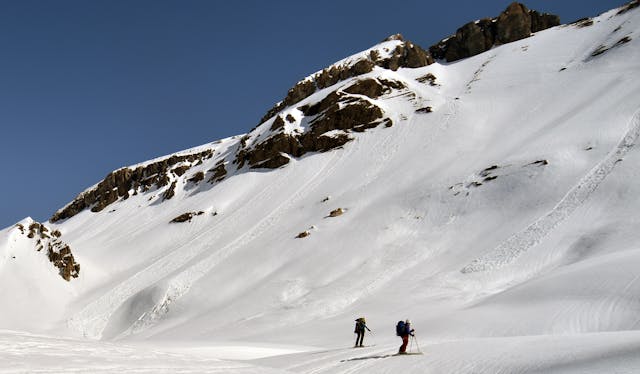
Loose wet avalanche activity during daytime warming.
Slab avalanches are more difficult to predict. It often takes multiple days of warm air temperatures for deeper layers in the snowpack to experience the influence of the warming, making it difficult to predict which day (if any) slab avalanches may occur. The concern is that resulting avalanches are often very large and destructive; they could even start high in the mountains and terminate in the valleys. Needless to say, you do not want to be near any of these when they occur.
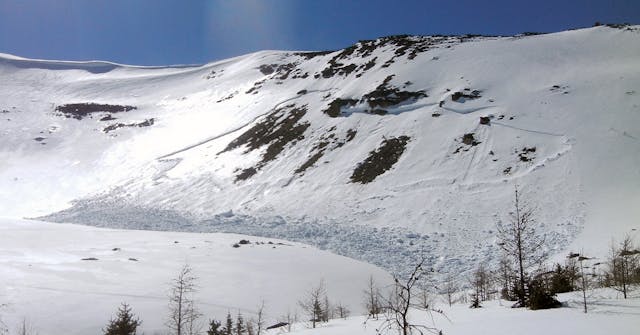
Slab avalanche triggered by snowpack warming.
Cornices are very large at this time of year but predicting what day they may release is almost impossible. Cornices should always be treated as suspect, particularly during periods of mild air temperature and sunny skies. A person on top of a cornice that fails could fall down the mountain side and a cornice that falls from above could impact you, like being hit by a train.
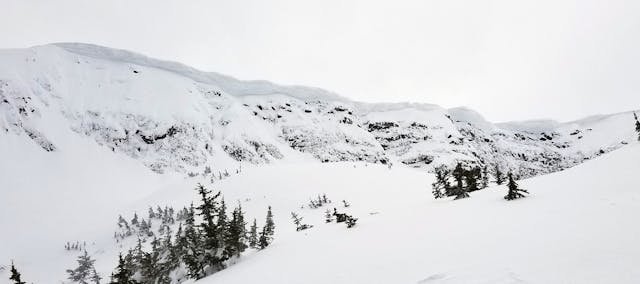
Large cornices line mountain ridges at this time of year, which are more likely to fail during extended warm periods.
Large slab avalanche activity could occur in any of the forecasting regions, but we believe they are most likely to occur in the following regions, where buried weak layers are more likely to be found:
- Northwest Inland
- North Rockies
- Purcells
- South Rockies
- Yukon (except White Pass)
Although Avalanche Canada does not forecast for the National Parks or Kananaskis Country, these regions will see a similar pattern with the coming warm weather.
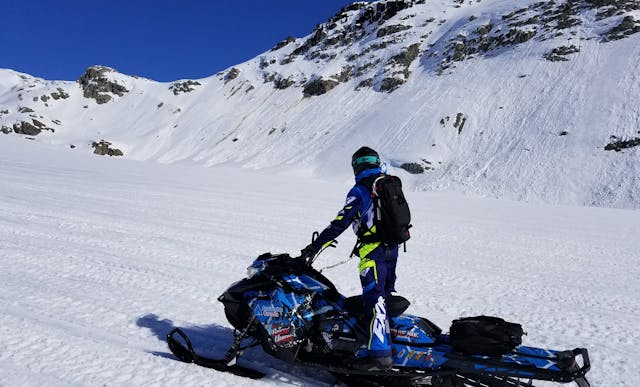
Widespread avalanche activity during daytime warming.
With the uncertainty of timing and size of avalanche activity, we offer the following guidance to play safe in the mountains during this warming trend:
- Start your day early and end your day early. Avalanche activity will be less likely when the snowpack is coolest during the night and early morning, and most likely during peak daytime warming.
- Watch for preliminary signs of daytime warming, such as a moist or wet snow surface, snow falling from trees, or snow falling from steep terrain and pinwheeling down the slope. This is most likely to first occur on sun-exposed slopes.
- Be particularly cautious if there is no overnight freeze (i.e., air temperature stays above 0°C even during the night). This means that warming can push even deeper in the snowpack, increasing the likelihood of avalanche activity.
- If you are in an area where deeper weak layers may be present, do your best to avoid large, high consequence terrain during periods of daytime warming.
- Since avalanches could release full path, you will want to avoid travelling through the runout zones of avalanche paths, particularly during the middle of the day. This includes runout zones that are snow-free, as large avalanches from above could travel far into the valleys.
- Avoid travelling along the edges of ridgelines or on slopes beneath cornices. If you are on a ridge and can’t see the slopes beneath you, assume that a cornice is present and stay well back. Cornices themselves can kill people and their release can also trigger slabs on the slopes below.
- Follow the avalanche bulletin for your region, which will be updated daily until April 23 (and later for the Yukon).
Spring riding can be some of the best of the year; let’s all enjoy it safely.
- Mike Conlan